-
Posts
335 -
Joined
-
Last visited
-
Days Won
13
Content Type
Profiles
Forums
Downloads
Gallery
Posts posted by todd
-
-
Go to the Download section of the Instrument Driver Network on ni.com. Enter Tektronix as manufacturer; enter TDS 210 as additional keywords. I am happy to see that this driver uses LabVIEW VISA reads and writes instead of dll calls which were used for the last version of tktds1x2x I used.
-
About once a month, while editing someone else's spaghetti, I wish there was a way to trace I/Os all the way through a BD. I.E. all "VISA Session" inputs and "dup VISA Session" outputs that are strung together on a single BD. Or all Picture Ins and Picture Outs. Wildcards would be helpful as well as the ability to invert wire selection for deletion. Sometimes it's enough to select the VIs from Hierarchy view and copy-paste them into a new VI. This clears all wires but loses dataflow/screen position.
-
Right click on an array and select "Add Array Dimension".
Alternate: bundle each array separately.
-
In a particular application I've got a few queues that fill up until the end of a test - then all data is dequeued. I wanted to add queue monitoring so a new loop gets all queued elements (from Get Queue Status) and displays as required. To keep the displayed data persistant, I use a shift register and 'filter from 1d array' to catch new values (see image). This was too dependent on timing.
I use a single subvi to enqueue data from anywhere in the app. I changed the vi to put the data in two different queues instead of one. The second queue can dequeue data without affecting the persistant queue.
-
-
This has happened to me at least five times over the past year (undo - redo always fixed it). I reboot win2k every 4-6 weeks and restart LV every two weeks. I can not reproduce it but I think the problem gets cleared after a LV restart.
-
In the past, Measurement Computing support consistently went out of their way to explain to me the workarounds for getting their hardware working in LabVIEW.
-
I catch Event errors with the subvi in the attached image - even if the Stop button is not visible on the FP. For init, I still use one subvi before the While-Event loop. Usually, the init vi enqueues commands that are interpreted by queue handlers outside the Event-While loop. I agree it would be more convenient if there were First Run and Error events.
-
I've placed a few express vis for convenience and out of curiosity. I ended up streamlining 1/3 of them and customizing another 1/3. Look inside and see (RMB -> "Open Front Panel", Convert).
-
Since the input and output rates are both set to 8kS/s, I would assume they are synchronous. Some tests should show if the card has more than one sample clock and if they are coherent.
This vi was built in haste. The first time I tried it, the output finished before the input started acquiring. The snake was to start the input acq before the output started. Notice the difference in X-axes (and Y-axes, for that matter).what was the idea to snake the error-messages throw all the sound-moduls? is it becouse of the error output? -
There's a windows version of expect from ActiveState. I don't know what it costs.
Oh, from the buy page:
commercial use for one user on any # of machines: US$295
education: US$49
free 21 day trial
-
vi saved for 7.0 attached. The sound vi's did not convert to previous - you may need to replace them.
-
The obvious (therefore probably wrong) answer is "Number to Boolean Array". (At least my post count goes up
 "
" -
Ah, full duplex sound. I knew you'd soon reach the limits of my knowledge.
A metacrawler search for "soundcard full duplex" turned up this page with this quote:
Most PC soundcards in recent years have been full-duplex. However, if you have an original (8-bit) Soundblaster, Soundblaster-16, Soundblaster Pro, or other older card, they are 'half duplex' cards and you will have to upgrade. A full-duplex sound card is available in most computer stores for well under $100.However, on my work PC I was able to see the following image. I couldn't find a mic quickly so the signal may be crosstalk.
-
-
-
Yes. However, it is rare for me to have a BD much bigger than half of one screen. I usually keep the BD behind or near the FP and use one monitor for the main UI - the other for development of dynamic callees.
-
This also works on Mozilla 1.7.3.
-
Why not calculate all harmonics then index the arrays of amplitudes and frequencies?
-
Here's some text from:
ftp://ftp.ncsa.uiuc.edu/HDF/HDF5/contrib/labview/info
FYI: We have finally released the applications which use HDF5. Included
in the release is a set of LabVIEW VIs and a "glue" DLL to access the HDF5
DLLs. LabVIEW HDF5 users can get the HDF5 utilities by going to
http://www.ni.com/ and typing "scope soft front panel" into the search box.
Select the 1.5 version from the many hits resulting. Included in this
self-extracting ZIP file is another self-extracting ZIP file titled
sfpFile.exe. This contains the LabVIEW VIs to read and write the HDF5
based waveform files used by the soft front panel. Documentation is
included for the higher level VIs. Users only interested in the lower
level VIs will find they match the HDF5 C API very closely. The set of VIs
is not complete, but they handle most common functionality. They can
easily be used as templates to generate additional functions. Requests for
additional features can be directed to info@ni.com. The contact people are
Norma Dorst and Lokesh Duraiappah. If the user wants fast response,
mention at least one of them in the e-mail to ensure proper routing.
Support is through the usual NI routes.
I found 2.5 here but it's still downloading (39MB) so I have not yet checked it for sfpFile.exe.
[edit]
So now I see that Michael provided the link to sfpFile.exe.
[/edit]
-
I found them by searching the Functions palette for "gaussian", "auto power" and "harmonic". I am using the PDS, however (e.g. add-on toolsets), and it seems like the toolset used to be listed in the search results. Is there a simple way to tell which vi's are part of a toolset? Perhaps just knowing which top-level function palette is enough.
-
I have not worked with those data formats. I am interested in what you learn. Here's some expounding:
The only reason I can think of not to use a relational database is the metadata. I've used a few methods of storing metadata. The attached gif shows metadata in the filename. I've also used ini files with sections for parameters and for data. These are saved as csv so excel will associate (for my colleagues).
The work I've done with databases has been focused on creating tools that make new databases based on the swept parameters. Of course, there is another tool that creates viewers of each database. It's all very clunky and makes intra-database correlations difficult.
-
Search these forums for "SQL".
-



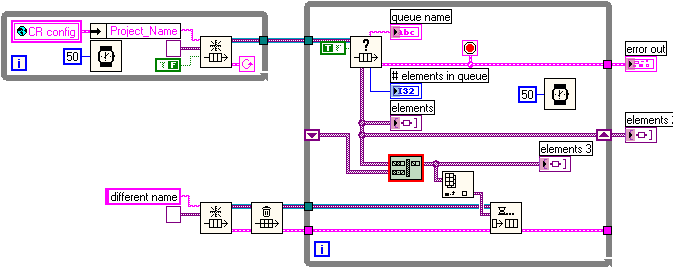
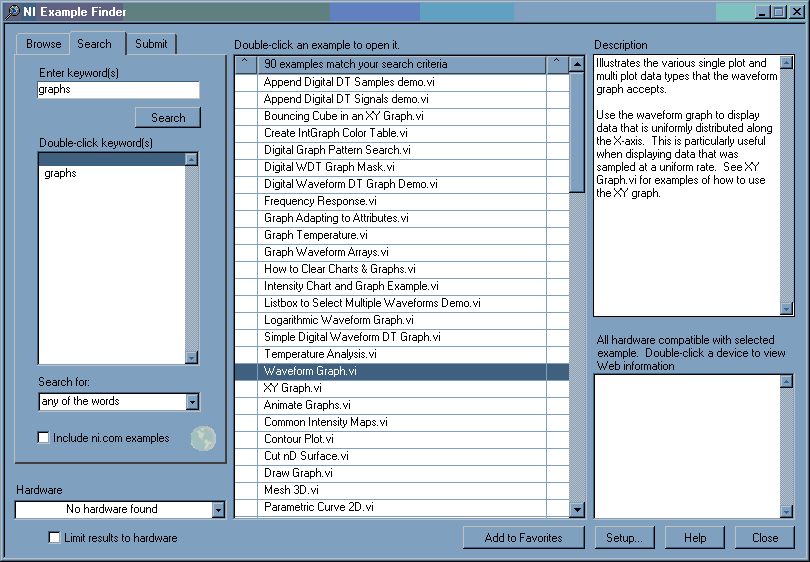
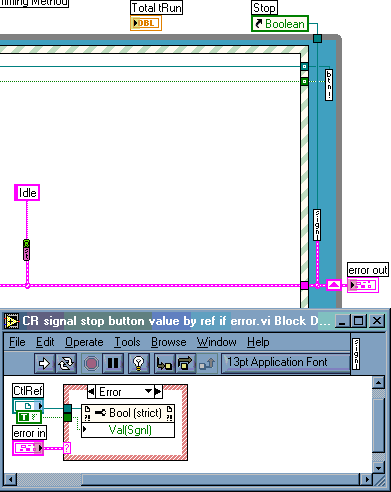

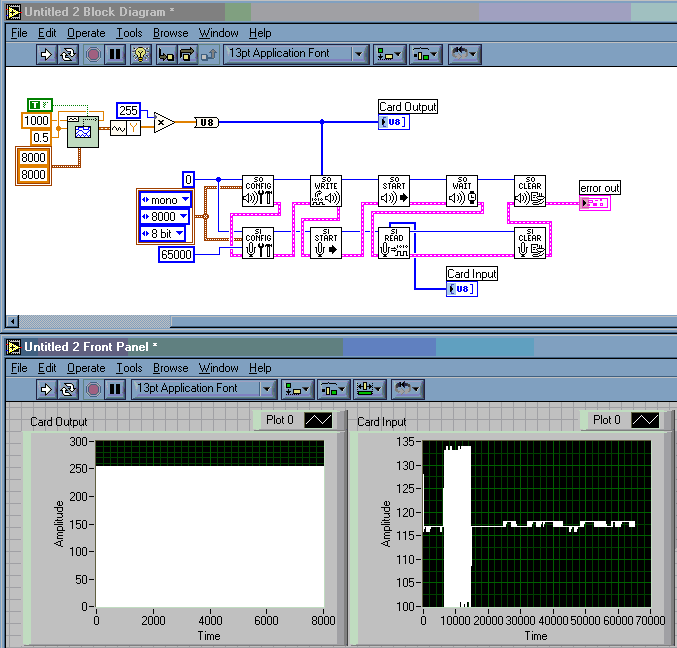
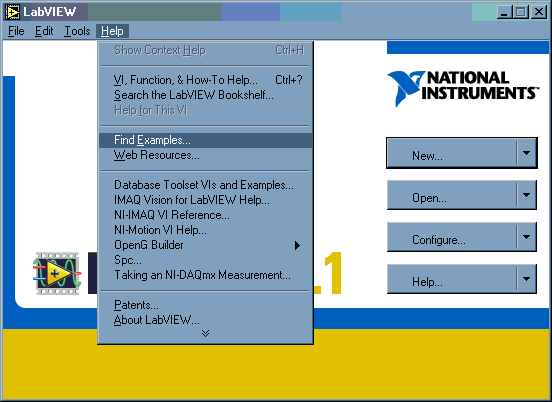
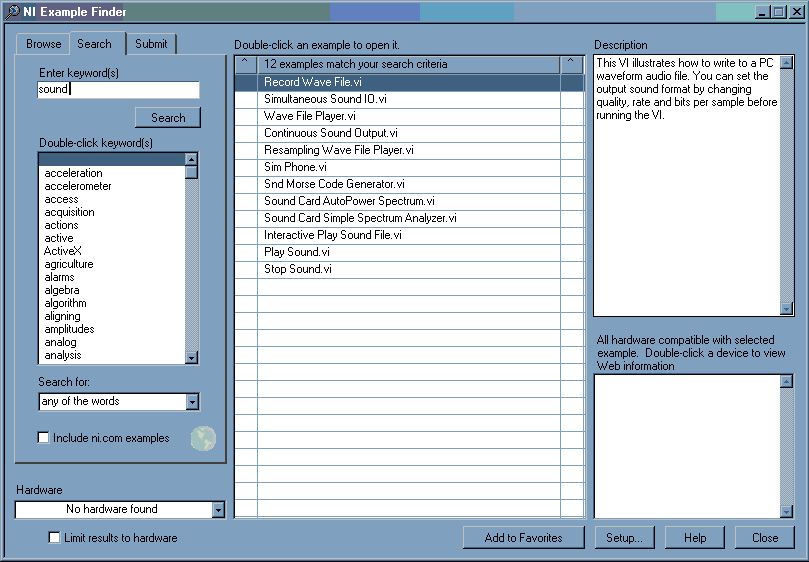

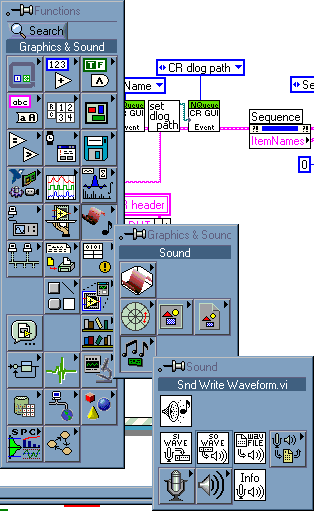
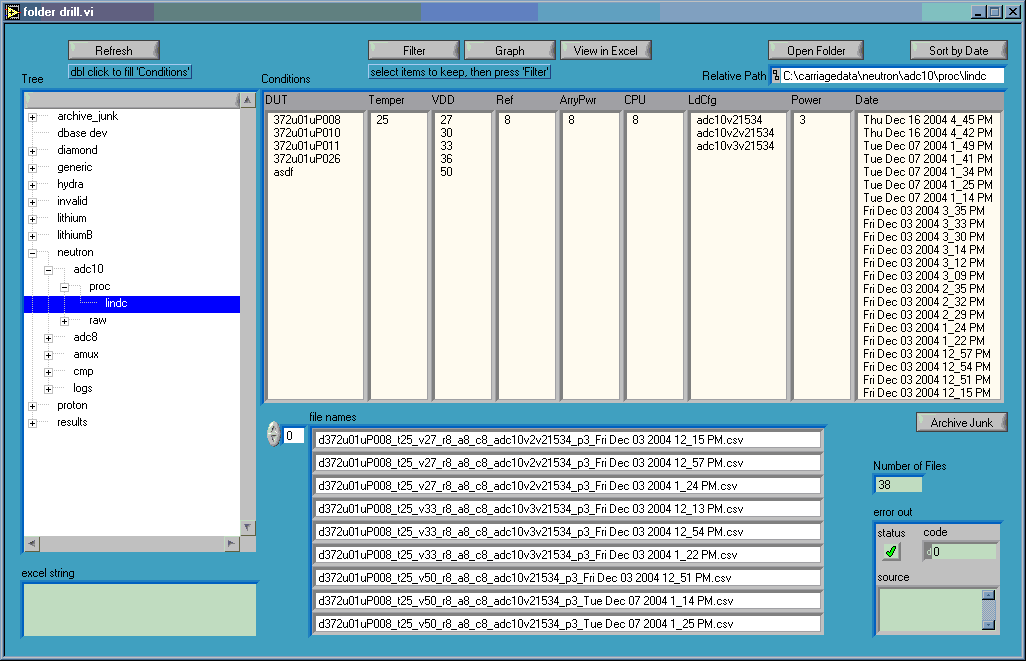

Need Help detecting value change.
in LabVIEW General
Posted
Data Changed is in the OpenG comparison pallette. You do use OpenG, don't you?